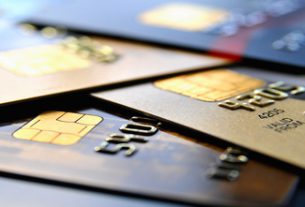One of the most misunderstood factors when it comes to buying gold, silver and other precious metals, is whether to buy physical gold or paper gold.
Physical gold is just what the name suggests: physical gold coins and bars that investors actually own themselves. Paper gold is the term given to investments such as gold exchange-traded funds (ETFs).
How Do Gold ETF’s Work?
ETFs operate in a similar manner to mutual funds, in that a fund purchases a quantity of gold, then issues shares in the fund to investors. The price of the shares is supposed to track the price of gold, rising and falling as gold’s price does the same.
Gold ETFs have the advantage of being easily liquid. But they have many more disadvantages that make them a terrible idea for individuals who want to take advantage of gold as a hedge or a safe haven investment.
Investing in Physical Gold
Investing in physical gold is just what it sounds like. Unlike a gold ETF, when you invest in physical gold you actually own that gold. Whether you store it at home, in a safe deposit box, or with an IRA custodian, you retain ownership. And whenever you want to take possession of it, you can.
Like any investment, investing in physical gold has its own risks. But those risks are far different from and far less severe than those faced by investing in a gold ETF.
Risk #1: How Much Gold Does Your ETF Own?
For one thing, investors don’t know if the ETF they invest in actually owns all the gold it claims to own. That gold could very well be encumbered in some way, such as being loaned out or being part of a repurchase agreement.
The fund could also continue issuing more shares in the fund without increasing the gold backing. Believe it or not, the large majority of gold ETFs are leveraged 2x or 3x over. That means that they sell two to three times more ETF shares than they actually have gold to back those shares.
This is similar to fractional-reserve banking, in which banks continued to print paper notes without additional gold backing those notes. It’s great for the share issuer who rakes in more money, but it’s not that great for investors who think they’re benefiting from investing in gold when they’re really just buying a paper derivative.
Risk #2: Can You Touch Your Gold?
As the old saying goes, if you can’t hold it, you don’t own it. Investors in gold ETFs can’t take physical possession of any of the gold in the ETF. All they can do is take a cash settlement.
Contrast that with investing in physical gold.
When you invest in physical gold, you decide which coins or bars you buy, you choose where and how your gold is stored, and you decide when you want to sell. Your gold is kept safe for you, segregated, and isn’t pooled with other people’s gold. That gives you the peace of mind that your gold is always working for you, isn’t loaned out or encumbered, and is there when you need it. There’s no inflation of paper shares, no risk of loss or theft, and no risk that your custodian will loan your gold to someone else.
And while you can use an IRA to invest in both shares of paper gold and in actual physical gold, when you decide to take a distribution from an ETF owned by an IRA you once again can’t take physical possession of any gold. But with a physical gold IRA you have the choice to take your distribution in cash or in gold.
Risk #3: What Kind of Gold Can You Invest In?
With a gold ETF you’re purchasing shares in gold bullion. Each shareholder supposedly owns some fraction of a 400-ounce good delivery bar. That’s all fine and good, but gold isn’t a monolithic investment asset.
When you invest in physical gold, you choose which form of physical gold to invest in. You can even invest in proof coins, limited edition mintages, and other forms of gold that have numismatic value above and beyond their intrinsic metal value. That can allow you to further grow your investment over the coming years above and beyond what you’d be able to with an ETF.
Risk #4: Counterparty Risk
With any sort of investment there’s counterparty risk: the risk that the people you’re dealing with don’t fulfill their end of the bargain. But the counterparty risk is far more severe with ETFs than with physical gold. That’s because physical gold is an asset that isn’t someone else’s liability, you own it outright just like a car or a piece of furniture. But an ETF is a claim on an asset held somewhere else, not an asset in and of itself.
With an ETF, the trail of ownership of gold that the fund supposedly owns could be long and complex. An order to sell your shares could result in half a dozen different people at various stages of the process having to execute that order. If any one of them fails to execute, your ability to recoup your investment could be in jeopardy.
With physical gold, on the other hand, the only counterparty you deal with is the person you buy your gold from. You pay money, your dealer delivers gold. As long as you deal with a trusted gold dealer, the transaction is as safe as buying food from the grocery store. And when you decide to sell your gold, the transaction goes just as simply.
Risk #5: Reliance on Wall Street
Many investors like ETFs because their shares are so liquid and so easily exchanged on major financial markets. But that makes ETFs heavily reliant on Wall Street. If Wall Street’s fortunes take a turn for the worse, forget about selling your shares anytime soon. And if the custodian who holds the ETF’s gold runs into trouble and stops redeeming shares for gold, the very existence of the ETF is called into question.
With physical gold you’re not reliant on Wall Street’s performance for your ability to buy and sell gold. Gold is bought and sold around the world, on and off exchanges, and is one of the most liquid assets available. If Wall Street crashes, if the banking system collapses, and if ATMs stop working, it doesn’t matter: you still own and hold physical gold, the ultimate asset and form of money.
Yes, ETFs may seem on the surface like they make it easier to invest in gold, but the drawbacks more than outweigh the potential benefits. So if you’re looking to safeguard your retirement savings by investing in gold, make the right choice and invest in physical gold today.
|
Physical Gold |
Paper Gold |
|
Pros
Cons
|
Pros
Cons
|
This article was originally posted on Goldco.





